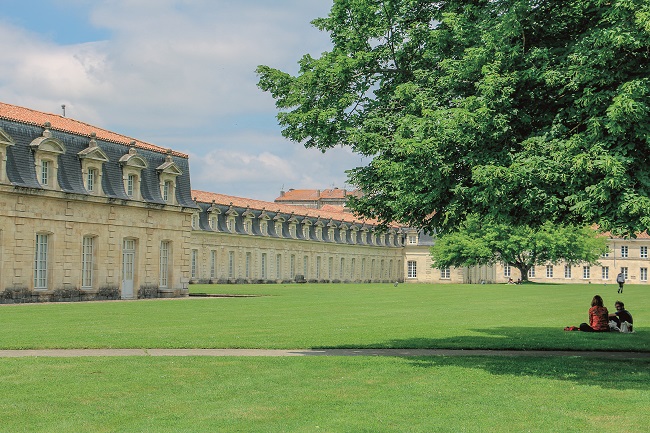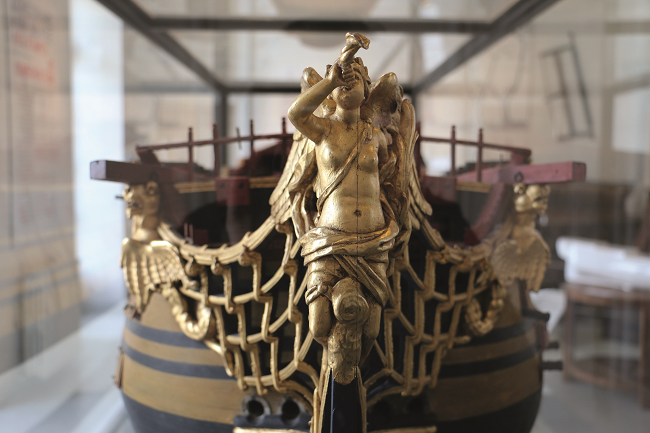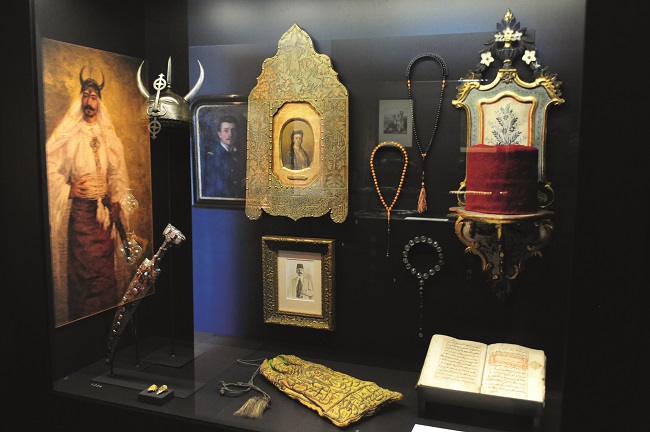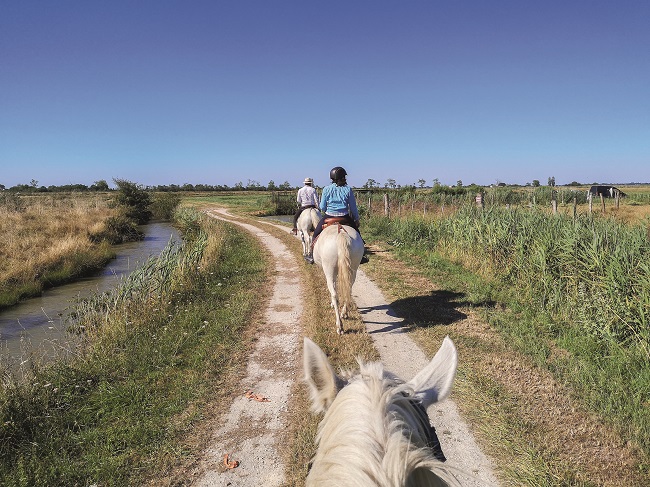City Breaks in France: Rochefort

Strategically developed on a bend in the river Charente, Rochefort oozes maritime adventure from every stone making it the perfect city break destination in western France.
When the big boss tells you to find a suitable location for his next major seafaring project, it doesn’t pay to get it wrong- especially when the main man is ‘Sun King Louis XIV. Happily, French statesman Jean-Baptiste Colbert well and truly hit the jackpot in 1665 when he found a strategic spot for Louis’s state-of-the-art new dockyard.
Tucked in a bend of the river Charente, some 8km up river from the Atlantic Coast, the farming village of Rochefort offered the potential for a tidal harbour hidden from prying eyes. The mouth of the river was sheltered by a trio of offshore islands – Oléron, Aix and Madame – and bordered by inhospitable marshland. And so work began in 1666 on a new arsenal that was to produce 550 ships before it finally closed down, centuries later, in 1926. Today, almost 100 years on, this elegant town with its fine mansions, public gardens and riverside walks proudly displays its status as a Ville & Pays d’Art et d’Histoire, a must-see for anyone who loves maritime adventure, scientific discovery and natural history.

As a royal harbour, Rochefort boasts outstanding heritage © Marika Domenici / OT Rochefort
Wander round town and it’s instantly apparent that Rochefort was designed in military fashion, with 14 east-west streets and 10 north-south radiating off the large open space of Place Colbert. The 1966 musical comedy, Les Demoiselles de Rochefort, was filmed here with a star cast that included Catherine Deneuve, Gene Kelly and George Chakiris.
But whilst the architecture remains predominantly 18th century, Rochefort still exudes a contemporary vibe with its many restaurants specialising in seafood and other local produce, plus a full programme of seasonal events. There’s an extra buzz, too, in the town centre on Tuesday, Thursday and Saturday mornings when locals and visitors flock to browse and buy from the market stalls.
Discover Rochefort’s maritime heritage and legacy at the Musée National de la Marine, located in L’Hôtel de Cheusses, the former headquarters of the Navy Commander. The French Navy was in its infancy when Louis XIV came to the throne, but Rochefort quickly became the hub of the shipbuilding industry and all its associated services, as well as home to the world’s first School of Naval Medicine.
Ever planted begonias in your garden? They made their European debut here thanks to scientists who set sail from Rochefort to voyage across the world during the 17th and 18th centuries and returned with specimens never before seen in Europe. The brilliant blooms we know as begonias were named in honour of Michel Bégon, a passionate plant collector and intendant in charge of the King’s new naval base.
In 1688, Bégon organised a trip to the West Indies and botanist Charles Plumier brought back six small herbaceous plants that he named after his benefactor, becoming the first person to dedicate a plant to a person. Visit the Begonia Conservatory for the full story and a collection of more than 1,500 botanical and hybrid varieties.

Learn the secrets of the historical Navy at the Musée de la Marine © Marika_Domenici / OT Rochefort
There’s more exotic flora in the Jardin de la Marine close to both the river bank and the impressive Corderie Royale, or Royal Ropeworks. The longest industrial building in Europe in the 17th century, it is also one of the most beautiful, dubbed the Versailles of the Sea’ thanks to its elegant design and riverside position. In recent years, I’ve enjoyed watching the progress on the Hermione, a replica of a frigate built here in 1778 to take the Marquis de La Fayette to North America in support of George Washington against the English. Painstakingly built here beside the Charente, the magnificent replica crossed the Atlantic in 2015 and retraced La Fayette’s 1780 journey from Yorktown to Boston, before returning to French waters. Hermione is currently in dry dock in Bayonne for maintenance, but in its place, visitors can see the Noé (Noah), a former Norwegian fishing boat which has also served as a surveillance boat and a floating TV studio.
I was also captivated by the extraordinary house belonging to one of Rochefort’s most famous residents, Pierre Loti. Born Louis Marie Julien Viaud in 1850, this naval officer and writer sailed all over the world and after each voyage, transformed a room in the family house to reflect what he had seen. I’ve never forgotten moving from the sober 19th-century parlour into a series of fantastical themed rooms in styles ranging from Medieval to Renaissance, Gothic to Oriental, where Loti would host lavish costume parties.

The Pierre Loti exhibition in Hebre de St Clément museum © Musée Hebre
The house is currently closed for major renovation and will reopen in 2025, but Loti artefacts and films are just one very good reason to visit the Musée Hèbre, Rochefort’s excellent museum of art and history, which will also be hosting temporary exhibitions this year as part of the city’s centenary celebrations for Loti, who died in 1923.
Enjoy a different kind of time travel at the Musée des Commerces d’Autrefois, a collection of old shop interiors crammed with nostalgia from the 1900s. And for lovers of aviation, the Musée de l’Aéronautique Navale, has an unrivalled collection of airships in two enormous hangars.
But Rochefort is more than just a historic town. In July 2020, the Charente Estuary and the Arsenal de Rochefort became the 21st member of the elite Grand Site de France network, an honour awarded in recognition of a 40-year commitment to preserving local landscapes, promoting heritage sites and developing sustainable tourism.

Stroll through the surrounding marshland © Caroline Jarry
Take it slow
Slow tourism is king in the countryside and along the coastline here, an area marketed as Rochefort Océan which includes the small resorts of Fouras-les-Bains and Port-des-Barques. Travel on foot, bike, or horseback, relax with a fishing rod or discover the rich birdlife of the shoreline and marshlands. At low tide, you can walk across the causeway to the tiny uninhabited nature reserve of Île Madame, or take a boat ride from Fouras to the Île d’Aix to visit the fortified village that was Napoleon Bonaparte’s last home in metropolitan France before his exile to Saint Helena.
The Atlantic shoreline here is dotted with forts, the most famous being Fort Boyard in the water between the islands of Aix and Oléron. Commissioned by Napoleon I to guard the access route to his naval dockyard, it stands today as a permanent reminder that visitors haven’t always been as welcome along this tranquil stretch of coastline as they most certainly are today.
From France Today magazine

© Julie_Paulet
Lead photo credit : Take things slow in Rochefort © Julie Paulet
Share to: Facebook Twitter LinkedIn Email
More in Charente-Maritime, city break, coastal town, French cities
Leave a reply
Your email address will not be published. Required fields are marked *




REPLY